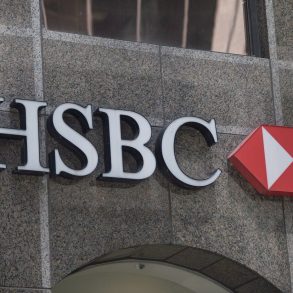 Fixed-rate funding costs have steadily risen for almost two months. We’ve seen the banks lift fixed rates once already, and now RBC is acting a second time.
Fixed-rate funding costs have steadily risen for almost two months. We’ve seen the banks lift fixed rates once already, and now RBC is acting a second time.
The nation’s largest mortgage lender is raising fixed rates 10-25 basis points, effective Wednesday.
But here’s the kicker. RBC is leaving posted rates as-is.
In other words, the 5-year posted fixed rate remains at 5.19%. Meanwhile, the “special offer” 5-year rate goes from 4.04% to 4.24%.
This is quite a departure from the norm. Normally posted and discount mortgage rates move together.
We’ve discussed the reasons for RBC’s decision here: RBC Mortgage Pricing Changes
The rest of the Big 6 will likely follow RBC’s rate increases on discounted rates. What remains to be seen is whether the other banks keep their posted rates in check. The outcome has implications for:
- The qualifying rate (used to approve high ratio variable and 1-4 year fixed borrowers); and on,
- The future of posted rates in general. (As posted rates move closer to discount rates they may eventually lose all relevance, and maybe [hopefully] dissapear for good.)
Rob McLister, CMT







Shocking! RBC wants to keep the CMHC qualifying standard as low as possible!
The only surprise is that it took one of the big banks this long to figure out how to get around the April 2010 CMHC changes.
Why do you think it is good that there is no difference between discounted and posted rates?
As a consumer, I don’t want there to be just one rate — I’ve worked hard to keep low debt, get a good credit score, etc. I would like to be rewarded for being a low-risk borrower, by not having to pay the same rate as people who are riskier (i.e., I would be helping the bank’s risk by subsidizing riskier borrowers).
Hi Bob,
Here are a few reasons…
1) Generally, you’re either a bankable client or you’re not. If you’re bank material then you’ll almost never pay above the “special offer” rate–which makes posted rates an anachronism.
2) Posted rates confuse a lot of people. That’s why RBC is de-emphasizing them, and why lenders like ING don’t use them at all.
3) Posted rates are used by many competitors to compare their own rates against, which promotes unrealistic advertising.
4) It’s a very competitive world out there and I assure you that with or without posted rates, and assuming you have a broker or can negotiate extremely well, banks will offer you near the best rate your application will allow. That is true regardless of the bank having a tiny minority of less-credit-worthy customers.
5) Some lenders use posted rates to charge people higher penalties.
6) High posted rates could eventually make variable-rate mortgages unattainable when people need them most (after rates go up 2+%). Even otherwise qualified borrowers would have difficulty getting a variable if posted rates were to hit 7%+.
Hope that clarifies.
Cheers,
Rob
Hi Rob,
Could you provide more clarity around your comment 5)? Wouldn’t using the higher posted rate rather than the special rate as the market rate in an IRD calculation actually decrease the penalty? Or are you referring to a different penalty calculation?
Thanks.
This should help!
http://www.theglobeandmail.com/globe-investor/personal-finance/mortgage-breakage-costs-lets-stop-the-nonsense/article1663002/
Cheers,
Rob
Thanks for the article reference Rob. I happen to work at a financial institution and I’ve never heard of that tactic, so I’m not sure which lender the article would be referring to. We use the documented rate (actual rate), not the posted rate at the time of advance. I’m not naive enough to claim that nobody would do such a thing and I agree that the tactic included in the article would be indefensible, but I question how many reputable FIs are actually using such a calculation method? I’m sure we can all agree that such tactics by a few are all the more reason for borrowers to make sure they understand the terms of their mortgage, wherever they choose to seek financing. Cheers.